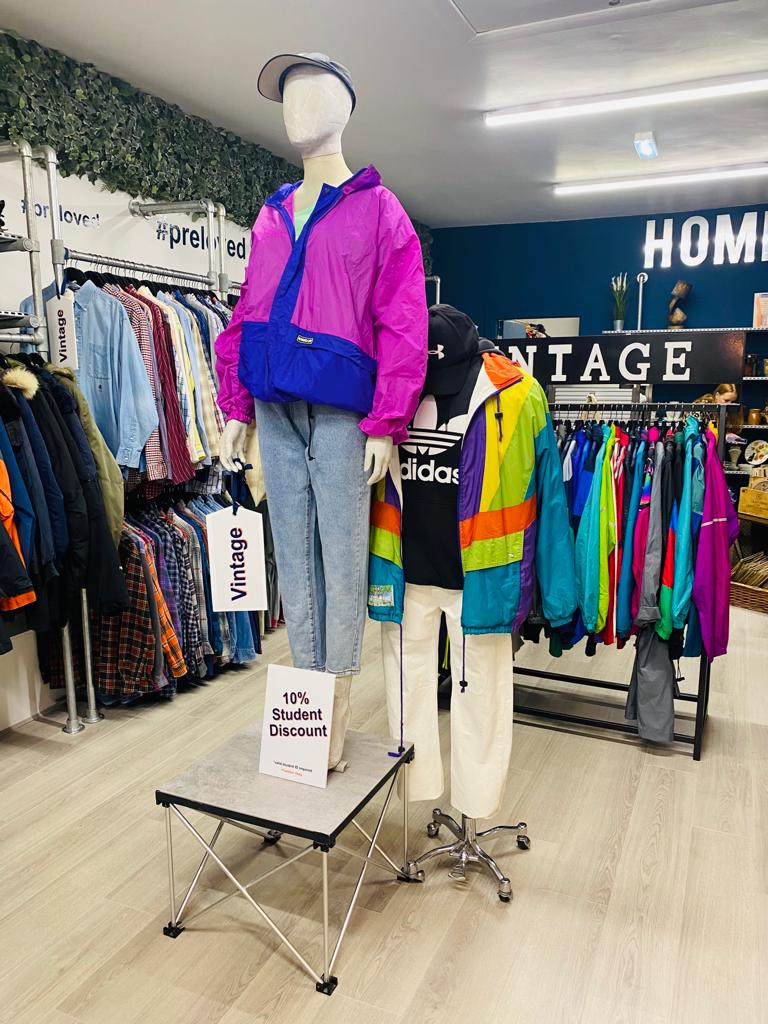
Finding the perfect vintage clothing online can be a thrilling experience, but it can also be challenging to determine if a lesser-quality item isn’t just trying to appear older. With the rise of fast fashion and the abundance of replicas in the market, it’s important to know how to identify authentic vintage clothing online.
We’ll share 6 tips to help you determine if the vintage piece you’re interested in is the real deal. From looking at the materials and construction to researching the brand and seller, these tips will guide you in making informed decisions when shopping for vintage clothes.
Look At The Brand Tag
When shopping for vintage clothing online, it is important to look at the brand tag as this will help you to identify the garment as vintage. Most vintage clothing items have minimalistic tags and these tags are clearly shown in images that come with the listing. This blog post provides a comprehensive look into identifying a time-honoured piece.
Often, you’ll see that the tag has some inscription of unions. This inscription typically comes with an unusual logo that may have been coloured with detailed embroidery.
Lot Number Tag Of The Vintage Clothing
One way to identify vintage clothing online is to look for a lot number tag. These were unique numbers added to clothes to keep track of them throughout the manufacturing process. However, lot numbers stopped being used after 1979. A lot number tag will usually have the manufacturer’s name and a unique number.
Clothing that is much older also shouldn’t have a care label. These labels were first introduced in 1971 and served as a way to instruct people on the best way to care for their clothes. If you are looking for, or are interested in, any kind of garment that is supposedly older than the 19070s, check if there is a care label.
Online vintage clothing websites will often provide information about these if multiple images are featured on a product page. NCBI operates a number of shops around Ireland. Check out our Shop Locations and find one that’s near you.
Pay Attention To The Fabric
Unless an item is categorised as “deadstock” or “new old stock” to suggest that it is a vintage piece that has not been worn, expect that these items will show a certain amount of stain, deterioration and some damage as well.
A high proportion of vintage clothing has imperfections. What you are after is the element of vintageness, the high quality of the textile used in these time-honoured items of clothing.
The specific textiles used in vintage clothing can vary widely depending on the style, era, and intended use of the item. It’s also worth noting that textiles and dyes used in vintage clothing can often show signs of ageing, such as fading, yellowing, or discolouration, which can add to their charm and character.
Vintage clothing can be made from a variety of textiles, including
- Natural fibres such as cotton, silk, wool, and linen.
- Synthetic fibres such as polyester and nylon.
- Decorative fabrics such as lace, tulle, and organza.
- Blends of natural and synthetic fibres.
You may also check the colour palette. Vintage clothing often uses brighter colours that are more vibrant than modern colours. Also, vintage clothing is known to be intricate and has a higher level of detail than modern clothes.
Take Note of One-Size-Fits-All and Half Sizes
Online vintage shopping can be a great way to add some unique style to your wardrobe. However, it can be difficult to know what size to order.
Retro apparel often uses different measurements than modern garments. For example, vintage sizes may be smaller than modern sizes. In most cases, dated sizes are usually “one-size-fits-all” which was a fad in the 1980s.
If you have seen people wearing oversized t-shirts, pants, and dresses, then those could be one-size-fits-all selections.
Vintage clothing often comes in half sizes as well, so be sure to take that into account when selecting a size. This is in contrast to today’s standard of whole sizes, and it means that the fit may differ from what you’re used to. The use of odd numbers in clothing such as 3, 5, 7 and 9. The rationale was to cater to small-size women. These types of sizing still exist though only to cater to kids.
To ensure a good fit, it’s recommended to take your own measurements and compare them to the size chart the seller provides online.
Keep in mind that vintage clothing has often been pre-worn, and may have undergone some changes in shape over time. For this reason, seeking detailed measurements from the online seller is wise.
FAQ
What Is Special About Vintage Clothing?
Vintage clothing is special because it is made from high-quality materials and often has an authentic look.
The fabrics are often unique. Combined with the different styles that reflect previous age-old trends, vintage shoppers can find one-of-a-kind items that express their personalities in ways most popular clothing choices can’t. Overall, vintage clothing is a great way to stand out from the crowd and be fashion-savvy without breaking the bank.
What Is The Difference Between Vintage And Thrift?
Vintage refers to an item that is older and in good condition. Thrift means that the item is used but still in good condition – it means shopping at a flea market, charity store, or in second-hand outlets or stores. The reason why people use it interchangeably is that people can usually find vintage clothing in charity stores.
Vintage clothing can also be found in vintage boutiques or from vintage collectors that usually sell these items online. Some even sell these through auctions through live selling or through their personal websites.